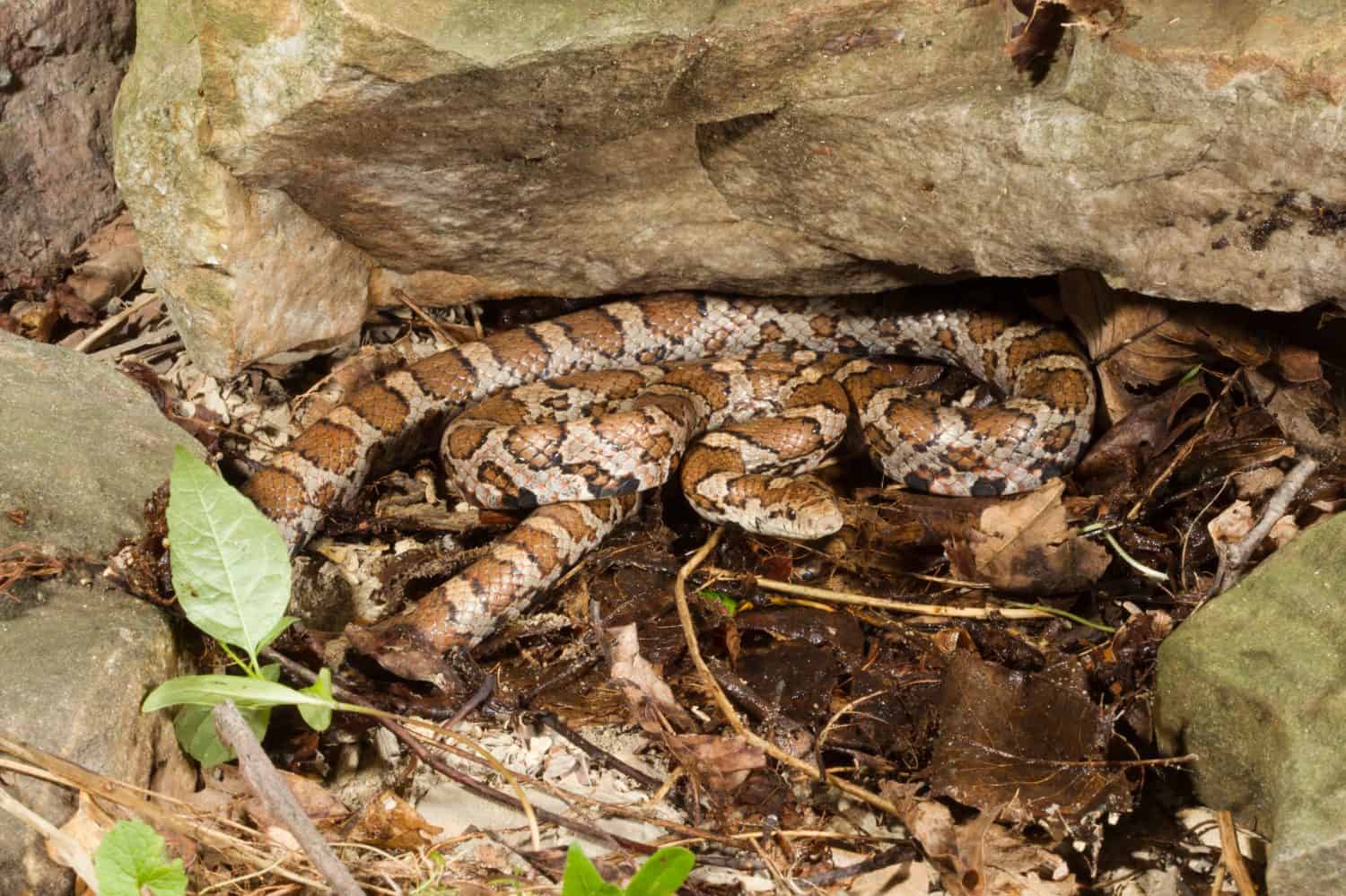Lake Placid is a popular lake in the state of New York. It’s in the Adirondack Mountains. This beautiful lake is glacial and has a surface area of 2,170 acres. The average depth of the lake is 50 feet. Multiple islands lay within the lake including Buck Island, Moose Island, and Hawk Island.
So many animals call this lake and the surrounding area home. In the lake, you can find large trout, bluegills, bass, sunfish, and northern pikes. Lots of birds also live in and around the lake including mallards, great blue herons, eastern bluebirds, cedar waxwings, hairy woodpeckers, and buffleheads.
Snakes can also be found slithering around Lake Placid, but are any venomous? Let’s find out. Follow along to discover 7 snakes slithering around Lake Placid.
Smooth Green Snake
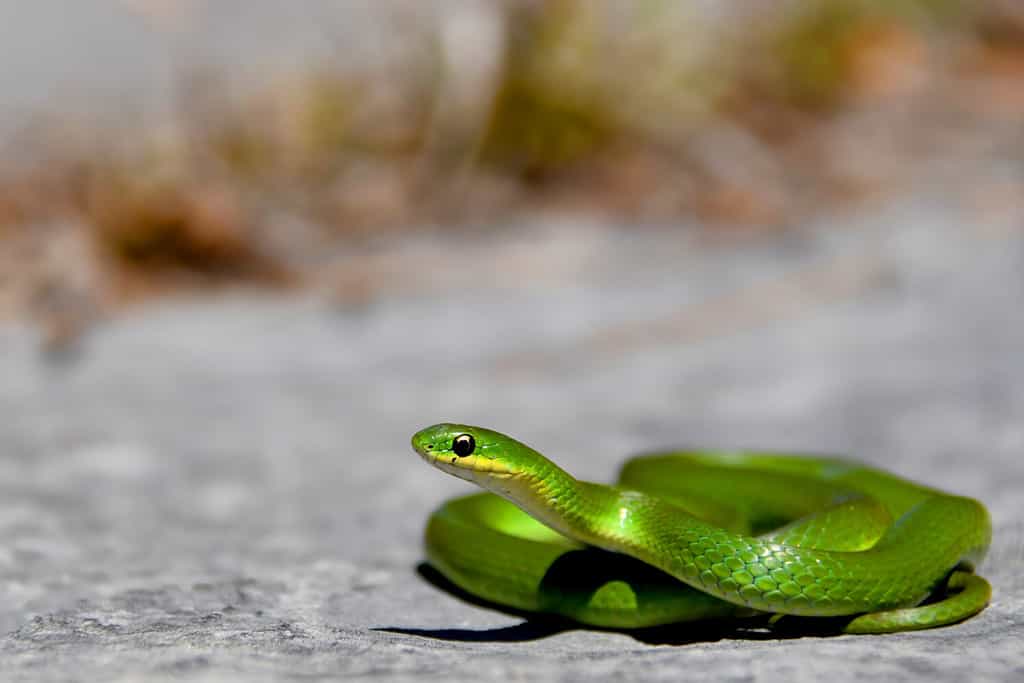
Smooth green snakes are small. They rarely grow up to 2 feet long.
©Lev Frid/Shutterstock.com
One type of snake found slithering around Lake Placid is the smooth green snake. This lovely snake goes by many names. It’s also known as the grass snake and lives throughout the U.S. It’s about 14 to 21 inches long and has a slender body.
Although it’s chilling to see a snake in the wild, smooth green snakes are not venomous. They are also nervous snakes that flee when afraid. Smooth green snakes rarely bite and are non-aggressive.
North American Racer

North American racers are non-venomous.
©Michael Chatt/Shutterstock.com
Also in Lake Placid is the North American racer. It’s a common snake found throughout the United States. This long and slender snake reaches about 56 inches long. It has large eyes, black/bluish scales, and white or light markings on its chin. Each subspecies ranges in appearance.
Adult North American racers and juveniles look very different. Juvenile North American racers have bright reddish-brown blotches and grey skin. Although they are not venomous or aggressive, North American racers will bite when threatened. They are fast strikers but will flee when threatened. Still, when cornered, they may strike or rapidly vibrate the tip of their tails.
Eastern Ratsnake
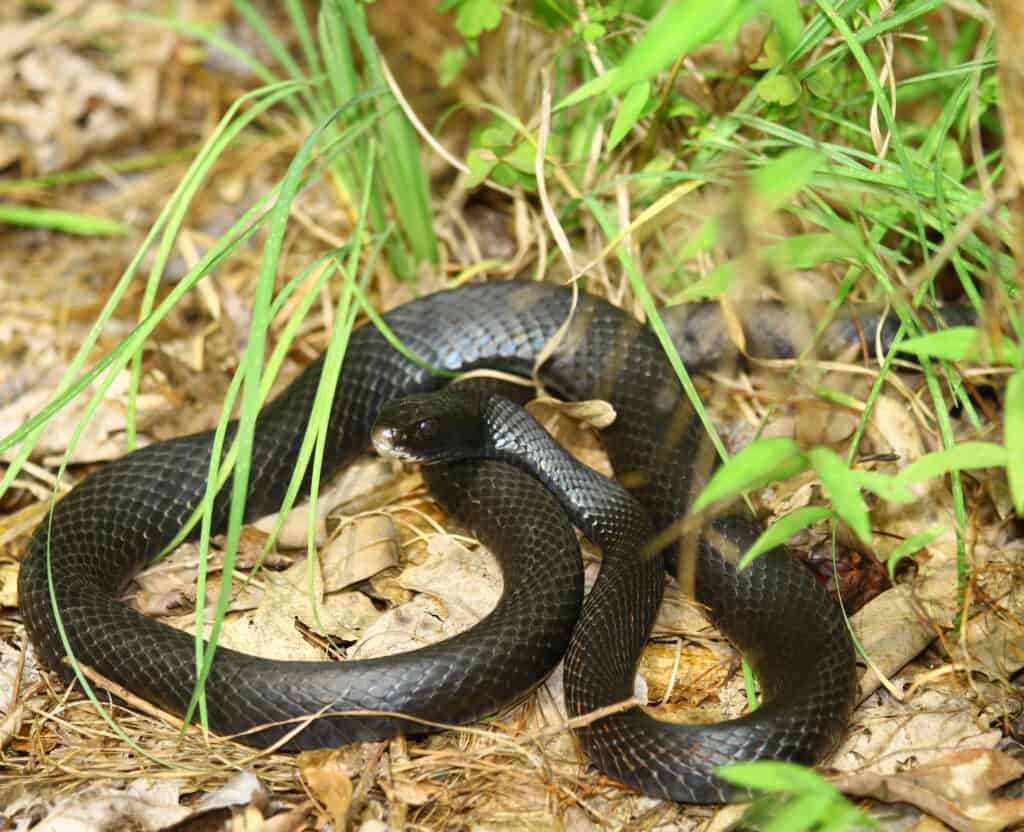
Eastern rat snakes may grow up to 6 feet long.
©Barry Blackburn/Shutterstock.com
Next on our list of snakes slithering around Lake Placid is the eastern rat snake. Like the snakes above, it’s also non-venomous. This species is common throughout North America. They go by many names like the black rat snake and the chicken snake.
Although known for their black coloring, many subspecies range in color. Some are even yellow like the yellow rat snake. Generally, eastern rat snakes are about 3 to 6 feet long. They may weigh up to nearly 3 pounds.
Eastern Milksnake
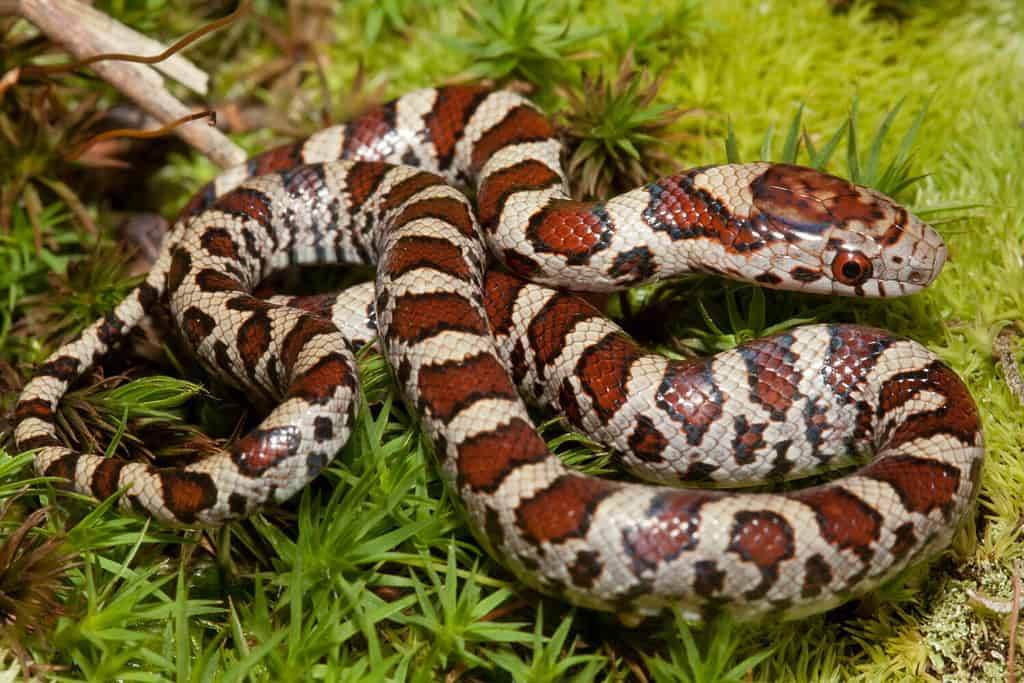
The scientific name for an eastern milksnake is
Lampropeltis triangulum triangulum.
©Nathan A Shepard/Shutterstock.com
Also found near Lake Placid is the eastern milksnake, sometimes just called the milk snake. The scientific name for this snake is Lampropeltis triangulum triangulum. They are non-venomous and live from Maine to South Carolina.
Eastern milksnakes are beautiful. They have shiny reddish or reddish-brown skin with patterns of large blotches. The blotches have a black border. So, how big can they get? Eastern milksnakes are about 2 to 3 feet long.
Common Ribbon Snake

Common ribbon snakes may grow larger than 2.5 feet long.
©Creeping Things/Shutterstock.com
The common ribbon snake is a species of garter snake. They are thin and colorful snakes that range in size. Common ribbon snakes, also known as eastern ribbon snakes, are about 7 to 35 inches long. They are generally dark brown with distinct yellow strikes.
Common ribbon snakes are venomous. There are four subspecies. This snake lives near water. They can be found near lakes and ponds.
DeKay’s Brownsnake

The DeKay’s brown snake has a wide distribution in the eastern half of the United States.
©Paul Reeves Photography/Shutterstock.com
Have you ever heard of the DeKay’s brown snake? It’s another small, non-venomous species you can find slithering around Lake Placid. This small snake lives in North and Central America. It’s found from Maine to Texas in the United States.
DeKay’s brown snakes live in many different environments. They can be found in wetlands, urban spots, and forests. These snakes eat many different things. They consume slugs, earthworms, mites, and snails.
Timber Rattlesnake
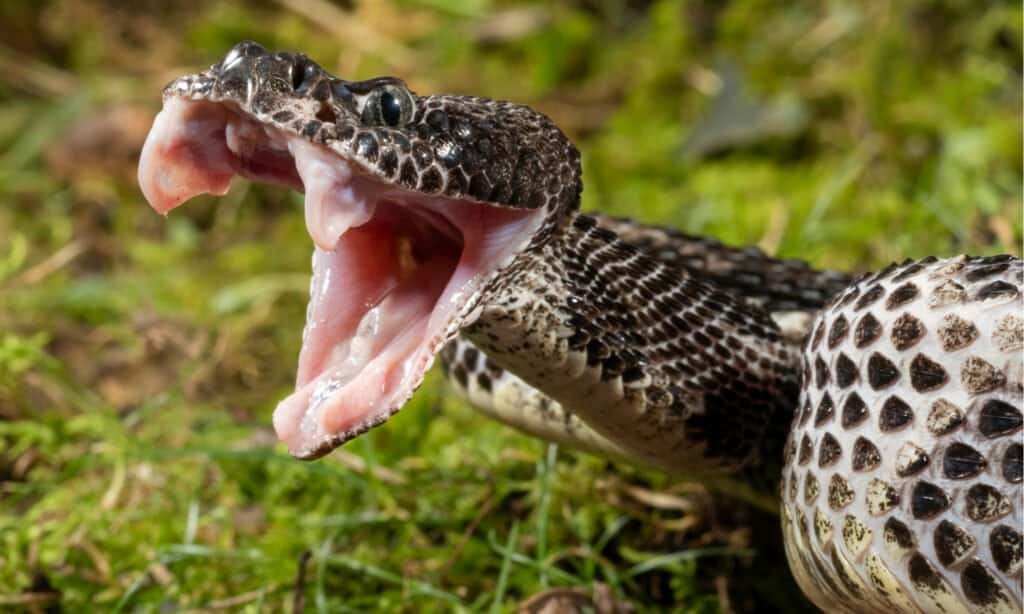
Timber rattlesnakes are venomous.
©Joe McDonald/Shutterstock.com
The only venomous snake on our list is the timber rattlesnake. There are few venomous snakes in the state. Timber rattlesnakes are pit vipers endemic to eastern North America. They have a wide range in the eastern United States. They are found from New York to northern Florida and most of eastern Texas.
Timber rattlesnakes are thick and large, growing up to 60 inches long. They also weigh between 1 to 3 pounds. Timber rattlesnakes will flee when afraid, but are known to strike when cornered. If you encounter a timber rattlesnake, let it pass. Give it at least 15 feet of space. Chances are, they are just as scared of you as you are scared of them.
If you are bitten by a timber rattlesnake, call 911. Don’t try and treat the wound. Instead, stay calm and keep your heart rate low. If someone is around you, allow them to outline the bite mark and swelling with a marker. This tells medical personnel if the bite reaction is getting worse. Avoid ice and cold.
Discover the "Monster" Snake 5X Bigger than an Anaconda
Every day A-Z Animals sends out some of the most incredible facts in the world from our free newsletter. Want to discover the 10 most beautiful snakes in the world, a "snake island" where you're never more than 3 feet from danger, or a "monster" snake 5X larger than an anaconda? Then sign up right now and you'll start receiving our daily newsletter absolutely free.
Thank you for reading! Have some feedback for us? Contact the AZ Animals editorial team.

